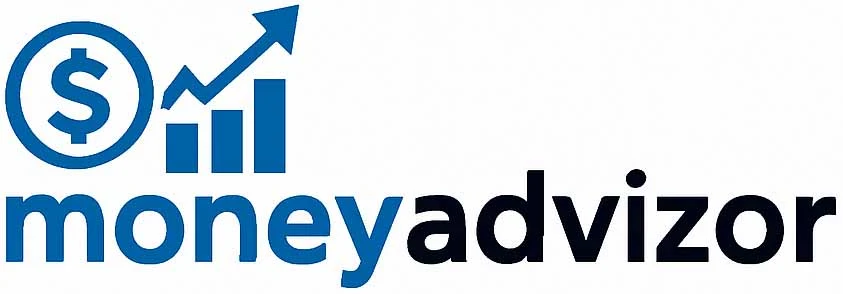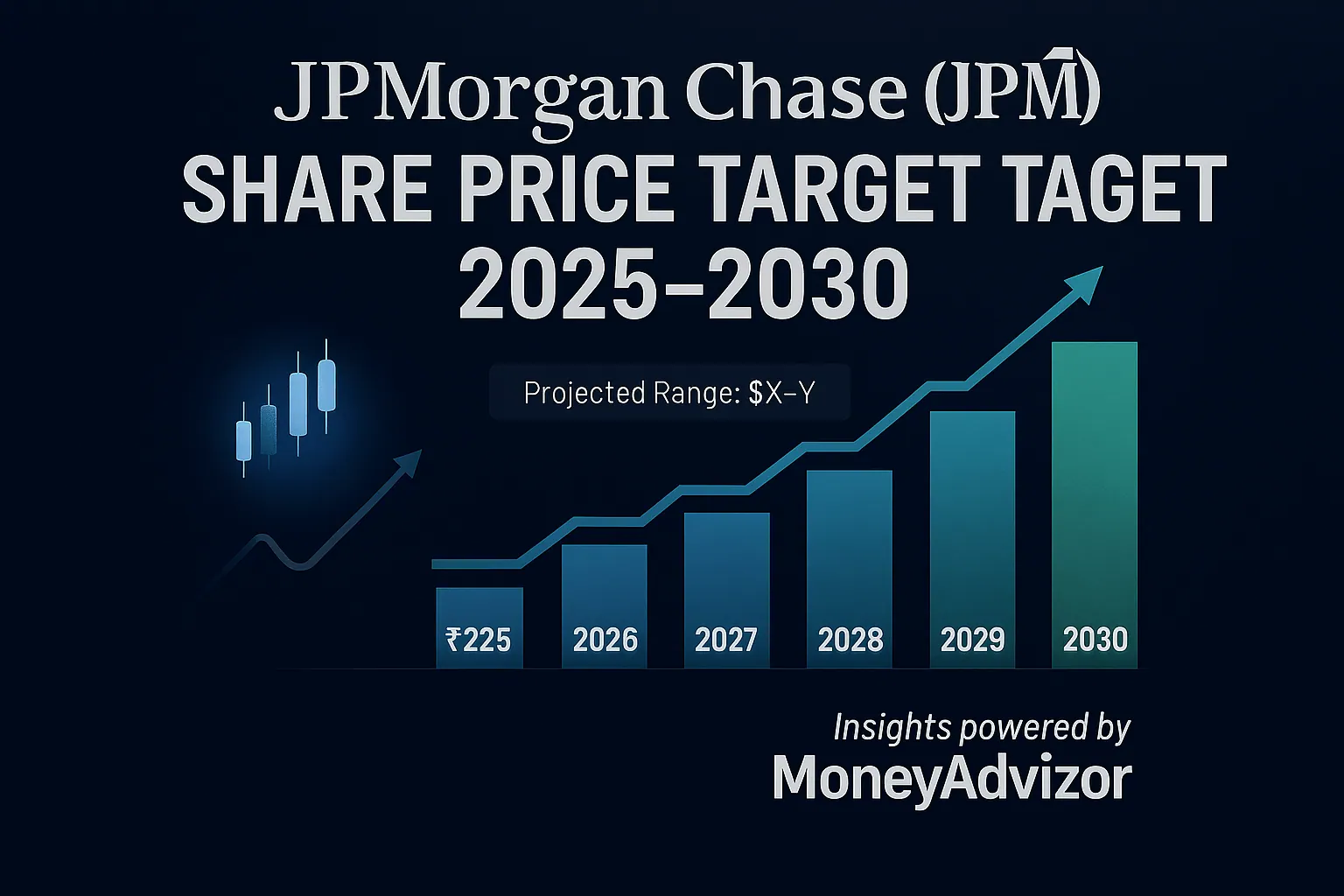The name JPMorgan Chase (JPM) is synonymous with global finance. As the largest bank in the United States by assets and a dominant force internationally, its performance is a key barometer for the financial sector and the broader economy. For investors, understanding where JPM’s stock might be headed over the next 5-6 years is crucial. This analysis dives deep into the current analyst consensus, underlying drivers, and expert forecasts for the JPM share price target from 2025 through 2030, providing a comprehensive roadmap for informed investment decisions.
JPM Analyst Ratings
Right now, Wall Street views JPMorgan Chase with measured optimism. Based on the latest data aggregating 19 analyst ratings over the past three months (as of late August 2025), the consensus leans firmly towards “Moderate Buy.” Here’s the breakdown:
The focal point for most analysts is the 12-month price target, offering a snapshot of expectations heading into late 2025/early 2026:
- Average 12-Month Price Target: $309.13
- High Forecast: $350.00 (TD Cowen, Steven Alexopoulos)
- Low Forecast: $235.00
- Upside from Current Price (~$293.59): Approximately 5.29%
JPM Quarterly Price Target Forecast 2025
| Quarter | Conservative Range | Moderate Range | Optimistic Range | Key Catalysts/Drags |
|---|---|---|---|---|
| Q3 2025 | $285 – $305 | $300 – $320 | $315 – $335 | Q2 Earnings Reaction (Jul), Fed Policy Signals, Loan Growth Data, CRE Market Trends |
| Q4 2025 | $290 – $315 | $310 – $330 | $325 – $345 | Q3 Earnings (Oct), Year-End Capital Plans, Economic Data (GDP, Inflation), Fed Decision |
| Q1 2026 | $295 – $320 | $315 – $340 | $335 – $360 | Q4/FY 2025 Earnings (Jan), FY 2026 Guidance, Initial 2026 Fed Moves |
| Q2 2026 | $300 – $325 | $320 – $345 | $340 – $365 | Q1 Earnings (Apr), Clarity on Economic Trajectory, Regulatory Updates |
*(Note: Q1/Q2 2026 targets represent the culmination of the current 12-month outlook period. Based on current analyst consensus, economic trajectory, and JPM execution. Conservative assumes persistent inflation/rate headwinds; Optimistic assumes strong execution + favorable macro shifts.)*
Recent Analyst Activity Highlights 2025:
- Significant Upside Calls:
- TD Cowen reiterated a Buy and raised their target to $350 (Steven Alexopoulos).
- Bank of America Securities reiterated a Buy and raised their target to $340 (Ebrahim Poonawala).
- Goldman Sachs reiterated a Buy and raised their target to $336 (Richard Ramsden).
- Barclays maintained a Buy at $330 (Jason Goldberg).
- More Cautious Stances:
- Phillip Securities downgraded to Hold with a target of $291 (Glenn Thum).
- Morgan Stanley maintained Hold, slightly raising to $298 (Betsy Graseck).
- Citi maintained Hold at $275 (Keith Horowitz).
- Reiterated Confidence: Many major firms, including RBC Capital ($305 Buy), Evercore ISI ($309 Buy), Wells Fargo ($325 Buy), and Piper Sandler ($320 Buy), reaffirmed positive ratings.
This activity underscores a generally positive, though not universally bullish, short-term view. The upgrades often cite JPM’s resilience, strong capital position, and ability to navigate economic uncertainty.
Key Drivers Influencing JPM’s Price Trajectory (2025-2030)
Forecasting beyond the immediate 12 months requires examining the fundamental and macroeconomic factors that will shape JPM’s performance:
- Interest Rate Environment: This remains paramount. Net Interest Income (NII) is a massive profit driver for banks.
- Higher for Longer? If rates stabilize above pre-2022 levels but stop rising significantly, JPM can benefit from wider lending margins without excessive pressure on funding costs or loan defaults. Current forecasts suggest a gradual easing cycle starting late 2025/2026, but the pace is critical.
- Sharp Declines: Aggressive rate cuts could compress NII, negatively impacting earnings in the short-to-medium term. JPM’s scale and diverse revenue streams provide some buffer, but it’s a headwind.
- Inverted Curve Impact: A persistent inverted yield curve (short-term rates > long-term rates) historically pressures bank profitability by making traditional lending less attractive. Resolution of this inversion is key.
- Economic Health & Loan Demand:
- Soft Landing vs. Recession: A “soft landing” (moderating inflation without a deep recession) is the ideal scenario, supporting steady loan growth and manageable credit losses. A recession would increase loan defaults (provisions for credit losses) and dampen demand for new loans. JPM’s underwriting discipline and large consumer & commercial base position it better than most, but it’s not immune.
- Commercial Real Estate (CRE): This sector faces significant challenges (remote work, high rates). While JPM is better diversified than regional banks focused on CRE, it still has exposure. How this plays out is a key risk monitor.
- Regulatory & Capital Requirements: The post-SVB environment has seen increased regulatory scrutiny and proposals for higher capital requirements (Basel III Endgame). Tighter regulations could:
- Increase compliance costs.
- Constrain JPM’s ability to return capital to shareholders (dividends/buybacks).
- Potentially limit certain profitable activities. The final form and impact of these regulations are major unknowns for the 2025-2030 horizon.
- JPMorgan’s Inherent Strengths (Mitigating Factors):
- Scale & Diversification: Unparalleled size across consumer banking, commercial banking, investment banking, and asset/wealth management. This diversification provides stability when one segment faces headwinds.
- Fortress Balance Sheet: Consistently maintains capital levels significantly above regulatory minimums. This provides resilience during downturns and strategic flexibility.
- Technological Investment: Heavy spending on AI, digital banking, and operational efficiency drives cost savings and enhances customer offerings.
- Management & Leadership: Widely regarded as having best-in-class leadership under Jamie Dimon and his team, known for prudent risk management and strategic vision.
- Consistent Profitability & Shareholder Returns: History of strong earnings and reliable capital returns (dividend growth and share buybacks) attracts long-term investors.
- Competitive Landscape & Market Share: Maintaining dominance in key areas like investment banking and payments against strong competitors (Bank of America, Citi, Goldman Sachs, fintechs) is crucial.
JPM Share Price Target Forecast: 2026-2030
Translating these drivers into specific price targets involves significant uncertainty. Long-term forecasts are inherently probabilistic. The tables below provide estimated annual average ranges based on synthesis of expert views, fundamental analysis, and potential economic scenarios. Monthly precision is impossible; these represent expected trading bands.
JPM Annual Price Target Forecast 2026
| Quarter | Conservative Range | Moderate Range | Optimistic Range | Key Catalysts/Drags |
|---|---|---|---|---|
| Q3 2026 | $305 – $330 | $325 – $355 | $350 – $380 | Mid-Year Economic Assessment, Fed Policy Path Clarity, Capital Markets Activity |
| Q4 2026 | $310 – $340 | $335 – $370 | $365 – $400 | Q3 Earnings, Full Impact of Initial Rate Cuts (if any), Year-End Positioning |
| Q1 2027 | $315 – $350 | $345 – $385 | $380 – $420 | FY 2026 Results & 2027 Outlook, New Regulatory Clarity (Potential) |
| Q2 2027 | $320 – $360 | $355 – $400 | $395 – $440 | Q1 Earnings, Economic Momentum Check, Tech Investment ROI Visibility |
| 2026 Avg. Range | $315 – $345 | $340 – $380 | $370 – $410 |
JPM Annual Price Target Forecast 2027
| Quarter | Conservative Range | Moderate Range | Optimistic Range | Key Catalysts/Drags |
|---|---|---|---|---|
| Q3 2027 | $330 – $370 | $365 – $410 | $405 – $450 | Sustainable NII Post-Rate Cuts, Loan Book Quality, Wealth Management Growth |
| Q4 2027 | $340 – $385 | $380 – $430 | $425 – $475 | Q3 Earnings, Long-Term Strategic Updates, Global Economic Alignment |
| Q1 2028 | $350 – $400 | $395 – $450 | $445 – $500 | FY 2027 Results & 2028 Vision, AI/Fintech Integration Milestones |
| Q2 2028 | $360 – $410 | $405 – $460 | $460 – $520 | Q1 Earnings, Regulatory Capital Position Confirmation, Market Share Metrics |
| 2027 Avg. Range | $345 – $391 | $386 – $438 | $434 – $486 |
JPM Annual Price Target Forecast 2028
| Quarter | Conservative Range | Moderate Range | Optimistic Range | Key Catalysts/Drags |
|---|---|---|---|---|
| Q3 2028 | $375 – $425 | $420 – $480 | $475 – $540 | Efficiency Gains Realized, Dividend Growth Trajectory, IB Market Leadership |
| Q4 2028 | $385 – $440 | $435 – $500 | $495 – $565 | Q3 Earnings, Capital Return Program Scale (Buybacks), Succession Planning Clarity* |
| Q1 2029 | $395 – $455 | $450 – $520 | $515 – $590 | FY 2028 Results, Long-Term EPS Targets, Macro Stability |
| Q2 2029 | $405 – $470 | $465 – $540 | $535 – $615 | Q1 Earnings, Economic Expansion Continuation, Potential M&A Strategy |
| 2028 Avg. Range | $390 – $448 | $443 – $510 | $505 – $578 | |
| (Note: Jamie Dimon’s eventual succession plan is a critical unknown for late 2020s)* |
JPM Annual Price Target Forecast 2029-2030
| Year | Conservative Range | Moderate Range | Optimistic Range | Key Catalysts/Drags |
|---|---|---|---|---|
| 2029 | $420 – $490 | $480 – $560 | $550 – $640 | Leadership Transition Smoothness, Sustained ROTCE >17%, Tech Dominance Payoff, Favorable Global Regime |
| 2030 | $450 – $530 | $520 – $620 | $600 – $720+ | Multi-Year Execution Track Record, Market Share Gains Cemented, Dividend Aristocrat Status, Potential Breakout Innovations |
Rationale for Long-Term Ranges:
- 2026 ($315-$410): Stabilization phase. Assumes interest rates find a new equilibrium post-easing, regulatory picture becomes clearer (though likely still a headwind), and the economy avoids recession. JPM’s investments begin showing efficiency gains. Mid-to-high single-digit EPS CAGR.
- 2027 ($345-$486): Growth acceleration. Benefits from stabilized rates, clearer regulations, and full impact of cost initiatives driving margin expansion. Market share gains and diversified revenue streams support above-peer growth. High single-digit EPS CAGR.
- 2028 ($390-$578): Maturity and execution. Sustained earnings growth, potential for modest P/E expansion if JPM demonstrates consistent superior execution and capital returns. Leadership transition (if occurring) is key. High single-digit to low double-digit EPS CAGR.
- 2029-2030 ($420-$720+): Compound growth era. Requires flawless execution, successful navigation of leadership changes (if any), significant benefits from technology/AI investments, and a supportive global economic environment. Focus on total shareholder return (Price + Dividends). Low double-digit EPS CAGR achievable in optimistic scenario.
Important Considerations for Forecasts:
- Inherent Uncertainty: These are estimates based on probabilities and current knowledge. Unforeseen events (geopolitical shocks, financial crises, major regulatory changes, leadership upheaval) can drastically alter the path.
- Earnings are Paramount: Stock prices follow earnings over the long term. Analyst estimates for JPM’s EPS growth are the primary driver. Current trends suggest accelerating growth from 2026 onwards if conditions improve.
- Valuation (P/E): JPM trades at a premium P/E due to its strength. Maintaining or slightly expanding this premium is possible with continued outperformance. Significant multiple expansion (e.g., P/E jumping from ~12x to 15x+) requires extraordinary growth or a major shift in market sentiment.
- Dividends Matter: JPM offers a solid and growing dividend (current yield ~2.3%). For long-term investors, reinvesting dividends significantly compounds returns and should be factored into total return projections. By 2030, the dividend could be substantially higher.
JPMorgan Chase Stock Forecast: FAQ
- What is the current average analyst price target for JPM?
- As of late July 2025, the average 12-month price target based on 19 analysts is $309.13, implying about 5.3% upside from the current price.
- What is the upside potential for JPM stock?
- Based on the average target, the near-term upside is ~5.3%. Longer-term (2025-2030), potential upside could range from modest (reaching the $300s) to significant (reaching $500+), heavily dependent on economic conditions, interest rates, and JPM’s execution.
- Is JPMorgan Chase (JPM) a Buy, Sell, or Hold?
- The current analyst consensus is “Moderate Buy.” This indicates a favorable view, but with recognition of near-term challenges (rates, economy, regulation). It’s not a unanimous strong buy signal. Individual decisions depend on your investment horizon, risk tolerance, and portfolio composition.
- What are the biggest risks to JPM’s stock price?
- Economic Recession: Leading to higher loan defaults and reduced demand.
- Rapid Decline in Interest Rates: Compressing Net Interest Margins.
- Stringent New Regulations: Increasing costs and limiting profitability/returns.
- Commercial Real Estate Downturn: Significant losses in CRE loans.
- Operational Missteps or Scandals: Damage to reputation and regulatory penalties.
- Intense Competition: Eroding market share, especially in key growth areas.
- Failed Leadership Transition: Loss of confidence if Dimon’s successor stumbles.
- What are the main positive catalysts for JPM?
- “Higher for Longer” Rates (Stable): Sustained healthy Net Interest Income.
- Soft Economic Landing: Steady loan growth and manageable credit costs.
- Strong Capital Markets Activity: Boosting Investment Banking fees.
- Efficiency Gains from Tech/AI: Improving profit margins.
- Benign Regulatory Outcome: Avoiding overly burdensome capital hikes.
- Continued Market Share Gains: Across core businesses.
- Smooth CEO Succession: Seamless transition maintaining strategic vision.
Conclusion: Navigating the Future with the Banking Behemoth
JPMorgan Chase stands as a colossus in the financial world. Its sheer scale, diversification, fortress balance sheet, and proven leadership provide it with significant advantages to weather economic storms and capitalize on opportunities. The near-term outlook (into 2025/2026) reflects cautious optimism from analysts, with a Moderate Buy rating and an average price target suggesting modest upside.
Looking towards 2030, the potential is undeniably significant. If JPM can successfully navigate the evolving interest rate landscape, avoid a deep recession, manage regulatory challenges, execute a smooth leadership transition (when it comes), and continue leveraging its technology investments, a share price comfortably exceeding $500, and potentially reaching $600-$700+ in an optimistic scenario, is conceivable. This implies a solid high-single-digit to low-double-digit CAGR over the period, significantly enhanced by dividend reinvestment.
However, investors must remain acutely aware of the risks. The path is unlikely to be linear. Economic downturns, adverse regulatory shifts, leadership missteps, or unforeseen crises could materially impact performance and delay or derail these long-term targets. The conservative ranges highlight the potential for periods of significant pressure.
Ultimately, JPMorgan Chase represents a high-quality, blue-chip investment within the financial sector. For long-term investors seeking exposure to a well-managed, diversified financial institution with a history of resilience, innovation, and shareholder returns, JPM remains a compelling core holding. The forecast for 2025-2030 points towards potential growth, but it demands patience, a tolerance for volatility tied to the banking industry and macroeconomics, and a clear understanding of the risks involved. Thorough due diligence and alignment with your individual financial goals are paramount before making any investment decision.




